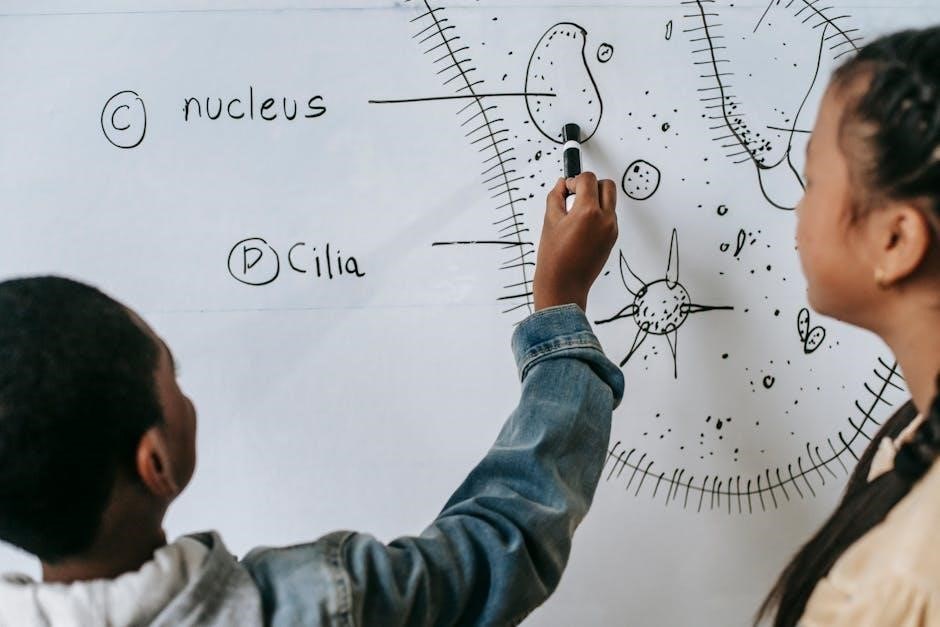This crossword clue challenges solvers to think creatively about cause-and-effect relationships. The instruction “Shake” leads to a three-letter answer, “PAW,” which cleverly connects the action of shaking to a common gesture involving an animal’s paw. This clue exemplifies how crosswords often use wordplay and simple associations to craft clever puzzles.
Understanding the Context of the Clue
The crossword clue “What’s Shaken After the Instruction Shake NYT” requires solvers to interpret the relationship between an action and its outcome. The word “Shake” serves as a directive, prompting the solver to think about what happens next. In this case, the answer is “PAW,” a three-letter word that cleverly ties the instruction to a physical gesture. The clue relies on wordplay, suggesting that after being shaken, the “paw” of an animal (or even a person) might be extended or moved. This context is crucial, as it bridges the gap between the action and the result, making the clue both tricky and satisfying to solve. The simplicity of the answer contrasts with the complexity of the clue’s phrasing, which is a common technique in crossword puzzles to challenge solvers’ thinking.
First Appearance of the Clue in NYT Crossword
The crossword clue “What’s Shaken After the Instruction Shake NYT” first appeared in The New York Times Crossword on October 6, 2023. This particular puzzle, constructed by Laura Taylor Kinnel, was notable for its clever wordplay and challenging clues. The clue was part of a Sunday puzzle, which often features more complex themes and clever twists. Its debut generated significant interest among crossword enthusiasts, with many solvers praising the clue’s creativity. The answer, “PAW,” was a standout due to its simplicity and the way it connected to the instruction “Shake.” This clue’s first appearance marked a memorable moment in NYT Crossword history, showcasing the puzzle’s ability to blend humor and intellect. It has since become a talking point among crossword fans, highlighting the artistry behind crafting such clues.

Evolution of the Clue Over Time
The crossword clue “What’s Shaken After the Instruction Shake NYT” has evolved in its presentation and reception since its debut. Initially appearing on October 6, 2023, the clue quickly gained attention for its clever wordplay and simplicity. The answer, “PAW,” became a focal point of discussion among crossword enthusiasts, with many praising its ingenuity. Over time, solvers began to analyze the clue’s structure, noting how it relied on a literal interpretation of the instruction “Shake,” leading to the unexpected yet logical answer. As more solvers encountered the clue, it sparked conversations about the balance between trickiness and fairness in crossword puzzles. While some found it delightfully clever, others deemed it overly ambiguous. Despite these mixed reactions, the clue has left a lasting impression on the crossword community, showcasing the art of crafting puzzles that challenge and entertain. Its legacy continues to inspire both constructors and solvers alike.

The Answer Revealed: “PAW”
The crossword clue “What’s Shaken After the Instruction Shake NYT” leads to the clever three-letter answer “PAW.” This simple yet ingenious solution connects the action of shaking to a common animal gesture, showcasing the clue’s charm and originality.
Significance of the Three-Letter Answer
The three-letter answer “PAW” holds a unique place in crossword puzzles due to its brevity and cleverness. Its concise form makes it both challenging and satisfying to uncover, as it requires a sharp connection between the clue’s instruction and the outcome. The use of “PAW” specifically highlights the clue’s reliance on wordplay and simple associations, which are hallmark techniques in crossword construction. This answer’s significance lies in its ability to encapsulate a broader concept within a minimalistic framework, proving that sometimes, the most straightforward solutions are the most brilliant. Additionally, “PAW” serves as a prime example of how crosswords can blend humor and logic, making it memorable for solvers. The compactness of the answer also underscores the importance of precision in puzzle design, where every letter counts.
How “PAW” Relates to the Instruction “Shake”

The answer “PAW” cleverly connects to the instruction “Shake” through a playful and indirect association. When something is shaken, it often involves movement or interaction, and a “paw” can be shaken in a gesture of friendship or agreement, such as a handshake. This wordplay relies on the dual meaning of “shake”—as both an action and a noun. The clue’s phrasing encourages solvers to think beyond the literal, linking the physical act of shaking to an object or entity that might be involved in such an action. The simplicity of the answer belies the cleverness of the clue, making it a standout example of crossword wit. This connection highlights how crosswords often use puns and simple associations to create engaging puzzles.
Why “PAW” Fits the Crossword Context
The brevity of “PAW” as a three-letter answer aligns seamlessly with the constraints of crossword puzzles, where concise yet meaningful words are essential. The clue’s phrasing, “What’s shaken after the instruction Shake,” suggests a cause-and-effect relationship, and “PAW” fits perfectly by implying an action that follows a command. The word’s simplicity and common usage make it accessible, while its clever connection to “shake” adds a layer of sophistication. Additionally, “PAW” resonates with solvers on a primal level, evoking images of animals or gestures, which enhances its memorability. This balance of ease and cleverness makes “PAW” an ideal fit for the crossword context, demonstrating how effective wordplay can elevate a puzzle’s engagement. The answer’s succinctness and thematic relevance ensure it stands out as a memorable solution, embodying the artful challenge crosswords aim to deliver.

Exploring the Crossword Puzzle
The puzzle, published on October 7, 2023, and constructed by Laura Taylor Kinnel, features “PAW” as a key answer. Its moderate difficulty and clever clues make it a engaging challenge for solvers.
Publication Date and Constructor
The crossword puzzle featuring the clue “What’s shaken after the instruction Shake” was published on October 6, 2023, in The New York Times. The constructor of this puzzle is Laura Taylor Kinnel, who is known for creating engaging and challenging crosswords. Kinnel’s puzzles often incorporate clever wordplay and thematic elements, making them popular among solvers. This particular puzzle was part of the NYT’s daily offerings, designed to test a range of skills from beginner to advanced. The inclusion of clues like “PAW” and “FEARS” showcased Kinnel’s ability to blend simplicity with clever misdirection, keeping solvers on their toes. The puzzle’s moderate difficulty level made it accessible while still providing a satisfying challenge for enthusiasts.
Overall Difficulty of the Puzzle
The crossword puzzle featuring the clue “What’s shaken after the instruction Shake” was published on October 6, 2023, and was constructed by Laura Taylor Kinnel. The puzzle was considered moderately challenging, with a mix of straightforward and clever clues. The clue in question, leading to the answer “PAW,” was noted for its clever wordplay and subtle misdirection, making it particularly tricky for some solvers. However, the overall difficulty was balanced, making it enjoyable for both experienced and casual crossword enthusiasts. The puzzle’s constructor effectively blended simplicity with complexity, ensuring a satisfying experience for all participants.
Other Notable Clues from the Same Puzzle
Beyond the clue “What’s shaken after the instruction Shake,” the October 6, 2023, NYT Crossword featured several other notable clues that stood out for their creativity and challenge. For example, one clue asked about “They might drive you to a flight,” leading to the answer “FEARS,” which required solvers to think metaphorically about emotions influencing actions. Another clue, “Stop, as a habit,” had the answer “GREEN,” referencing the color associated with stopping, like a traffic light. These clues showcased the constructor’s ability to blend clever wordplay with straightforward definitions, making the puzzle both engaging and mentally stimulating. While “PAW” was the most talked-about answer due to its unique misdirection, other clues like these added depth and variety to the puzzle, ensuring a well-rounded and memorable solving experience for crossword enthusiasts.

The Broader Implications of the Clue
The clue highlights how crosswords challenge solvers to think creatively, connecting simple actions to unexpected answers. Its popularity among enthusiasts underscores the enduring appeal of clever wordplay in puzzle design and culture.
Impact on Solvers and Crossword Enthusiasts
The clue “What’s Shaken After the Instruction Shake NYT” has sparked significant interest among crossword enthusiasts, particularly due to its clever wordplay and simplicity. For many solvers, the moment of realizing the answer “PAW” brings a sense of accomplishment and delight, as it combines a straightforward instruction with an unexpected yet logical outcome. This clue has also become a talking point in crossword communities, with discussions focusing on its unique design and how it challenges solvers to think creatively. Enthusiasts appreciate how it blends everyday language with a touch of humor, making it memorable. The clue’s popularity highlights the broader appeal of crosswords as a mental exercise that combines logic, wordplay, and fun. It also demonstrates how a well-crafted clue can engage both seasoned solvers and newcomers, fostering a sense of camaraderie and shared enjoyment within the crossword community.
Challenges in Deciphering the Clue
Deciphering the clue “What’s Shaken After the Instruction Shake NYT” presents unique challenges for solvers. The clue’s phrasing is intentionally vague, requiring solvers to think beyond literal interpretations. The key lies in understanding the wordplay, where “shaken” implies a physical action, but the answer, “PAW,” relates to an animal’s gesture. Many solvers might initially consider words like “hand” or “fist,” only to realize these don’t fit the three-letter constraint. Others may overcomplicate the clue, searching for more elaborate answers. The simplicity of the solution can be misleading, making it easy to overlook. Additionally, the clue’s reliance on a specific context—a common gesture involving shaking paws—means solvers must connect the instruction “Shake” to an animal’s response. This blend of brevity and cleverness makes the clue both tricky and rewarding, testing solvers’ ability to think creatively and make unexpected connections.
How This Clue Fits into the Broader Theme
The clue “What’s Shaken After the Instruction Shake NYT” seamlessly integrates into the overarching theme of clever wordplay and everyday actions. By linking the verb “Shake” to the noun “PAW,” it highlights a common interaction—shaking hands or paws. This connection emphasizes a playful yet relatable scenario, fitting well within crosswords that often blend humor with simplicity. The clue’s brevity and reliance on a familiar gesture make it accessible while challenging solvers to think creatively. It exemplifies how crosswords can transform mundane actions into engaging puzzles, encouraging solvers to explore unexpected associations and enjoy the “aha” moment when the answer clicks into place.

Similar Crossword Clues and Answers
Clues like “Flower that’s also a girl’s name” (LILY) or “Small bird” (TWEET) share a similar pattern of clever wordplay and simplicity. These puzzles challenge solvers to think creatively, much like “PAW” does.
Clues with Similar Wordplay
Clues like “Flower that’s also a girl’s name” (LILY) or “Small bird” (TWEET) use wordplay to challenge solvers. These puzzles rely on puns, homophones, or clever associations, much like “PAW,” where the answer is both simple and unexpected. For example, “Breakfast staple” might lead to “EGG,” while “Form of address” could be “SIR.” These clues test solvers’ ability to think creatively and make connections between seemingly unrelated concepts. The use of concise language and straightforward answers makes them accessible yet engaging. Over time, such clues have become a hallmark of crosswords, appealing to both casual and experienced solvers. They demonstrate how wordplay can transform a simple question into a delightful puzzle, keeping Crossword enthusiasts entertained and intellectually stimulated. The popularity of these clues underscores their enduring appeal in the world of crossword puzzles.
Answers That Follow the Same Pattern
Crossword clues often follow a pattern where a simple instruction leads to a concise, often unexpected answer. For example, “What’s stirred after the instruction ‘Stir’?” might lead to “TEA,” while “What’s kicked after ‘Kick’?” could result in “BALL.” These clues rely on direct cause-and-effect relationships, making them both intuitive and clever. Similarly, “What’s shaken after ‘Shake’?” leads to “PAW,” a short, punchy answer that fits perfectly within the puzzle’s constraints. This pattern is popular because it challenges solvers to think creatively while remaining accessible. The brevity of the answers, often just two or three letters, adds to the puzzle’s charm. Such clues are widely used in crosswords, appealing to both casual and experienced solvers. They demonstrate how simplicity can lead to engaging and memorable puzzles, keeping enthusiasts entertained and intellectually stimulated. This pattern’s effectiveness lies in its ability to blend simplicity with clever wordplay, making it a staple in crossword design.
Cross-References to Other Puzzles
The clue “What’s Shaken After the Instruction Shake NYT” has appeared in multiple crossword puzzles, with “PAW” consistently being the answer. This pattern is common across various NYT crosswords, indicating a recurring theme in puzzle design. Cross-references show that similar clues, such as “What’s stirred after ‘Stir’?” leading to “TEA,” follow the same cause-and-effect logic. These clues challenge solvers to think creatively about simple actions and their outcomes. The use of three-letter answers like “PAW” is a popular trend, making puzzles accessible while maintaining intellectual stimulation. By analyzing these cross-references, solvers can identify patterns that aid in solving future puzzles, highlighting the interconnected nature of crossword clues and their reliance on clever wordplay.

FAQ About “What’s Shaken After the Instruction Shake NYT”
This crossword clue asks for a word shaken after the instruction “Shake,” with the answer being “PAW.” It signifies a gesture and is tricky due to its clever wordplay and misdirection.
What Does the Answer “PAW” Signify?
The answer “PAW” signifies a clever play on words in the crossword clue. It represents a simple yet creative connection between the instruction “Shake” and the outcome. The word “PAW” refers to an animal’s foot, often associated with gestures like shaking, such as a dog shaking its paw. This three-letter answer embodies the crossword’s tendency to use concise yet meaningful solutions. The clue’s misdirection lies in its phrasing, which might lead solvers to overthink the connection. However, “PAW” elegantly captures the idea of something being “shaken” after the instruction, making it both surprising and satisfying. Its brevity and cleverness highlight the artistry behind crossword puzzles, where simplicity often hides deep wordplay. Thus, “PAW” is not just an answer but a testament to the puzzle’s ingenuity.
Why Is This Clue Considered Tricky?
This crossword clue is considered tricky due to its clever wordplay and misdirection. The phrase “What’s shaken after the instruction Shake” suggests a direct action, but the answer, “PAW,” requires a lateral thinking leap. The clue’s phrasing leads solvers to expect a more literal or obvious response, such as an object being shaken. Instead, it hinges on the idea of an animal’s paw being shaken, a gesture often associated with humans and animals alike. The brevity of the answer, just three letters, adds to the challenge, as it demands precision and a quick mental shift. Additionally, the clue’s ambiguity—shaking can imply various actions—further complicates the solving process. This combination of subtlety and brevity makes the clue both intriguing and difficult, appealing to experienced solvers who enjoy a good puzzle.
How Does This Clue Compare to Others in Difficulty?
This clue is moderately challenging compared to others, as it relies on a clever play on words rather than straightforward definitions. The brevity of the answer, “PAW,” adds to the difficulty, as it requires solvers to think creatively about the connection between “shaking” and the result. Unlike some clues that rely on obscure knowledge or complex anagrams, this one tests the ability to interpret instructions literally and metaphorically. While experienced solvers might find it a fun and rewarding puzzle, newcomers could find it frustrating due to its reliance on wordplay. Compared to other NYT crossword clues, it falls somewhere in the middle in terms of difficulty, making it a good test of both vocabulary and lateral thinking. The simplicity of the answer belies the complexity of the clue’s phrasing, which is what makes it stand out.

and Final Thoughts
The crossword clue “What’s Shaken After the Instruction Shake NYT” cleverly leads to the answer “PAW,” showcasing a unique wordplay that challenges solvers to think creatively about cause-and-effect relationships. This clue stands out for its simplicity and cleverness, making it memorable for crossword enthusiasts.
The crossword clue “What’s Shaken After the Instruction Shake NYT” holds significance for its clever wordplay and simplicity. The answer, “PAW,” creatively connects the action of shaking to an animal’s paw, showcasing how crosswords challenge solvers to think innovatively. This clue stands out for its ability to engage solvers with a straightforward yet tricky question, making it memorable and impactful. Its effectiveness lies in its minimalist design, proving that even short answers can deliver big surprises. As a result, it embodies the art of crossword puzzles, blending humor and ingenuity to create a lasting impression on enthusiasts.

Impact on Future Crossword Puzzles
The clue “What’s Shaken After the Instruction Shake NYT” sets a precedent for future crossword puzzles by demonstrating the power of concise, clever wordplay. Its simplicity and creativity, leading to the answer “PAW,” inspire constructors to craft clues that are both challenging and satisfying. This clue’s success shows how short answers can deliver big surprises, encouraging innovation in puzzle design. By blending humor and ingenuity, it raises the bar for crosswords, pushing creators to think outside the box. The clue’s impact lies in its ability to engage solvers with a minimalist approach, proving that less can indeed be more. As crosswords evolve, this clue will likely influence future themes, emphasizing the importance of clever associations and unexpected twists. Its legacy will be in inspiring puzzles that are both fun and intellectually stimulating, keeping the tradition of crossword puzzles vibrant and engaging for years to come.
Final Reflections on the Answer “PAW”
The answer “PAW” elegantly captures the essence of the crossword clue, offering a simple yet clever solution. It reflects the clue’s wordplay, linking the action of shaking to a common gesture involving an animal’s paw. This answer highlights the charm of crosswords, where brevity meets creativity. The minimalistic approach of a three-letter answer underscores the puzzle’s ability to surprise and delight. “PAW” resonates with solvers due to its relatability and the subtle humor in its connection to the instruction “Shake.” It serves as a reminder of how crosswords can turn everyday words into intriguing challenges. The success of “PAW” lies in its ability to balance cleverness with accessibility, making it memorable and impactful. This answer exemplifies the artistry of crossword design, where simple words can create lasting impressions. Ultimately, “PAW” stands as a testament to the enduring appeal of crosswords and their unique ability to engage and entertain.
